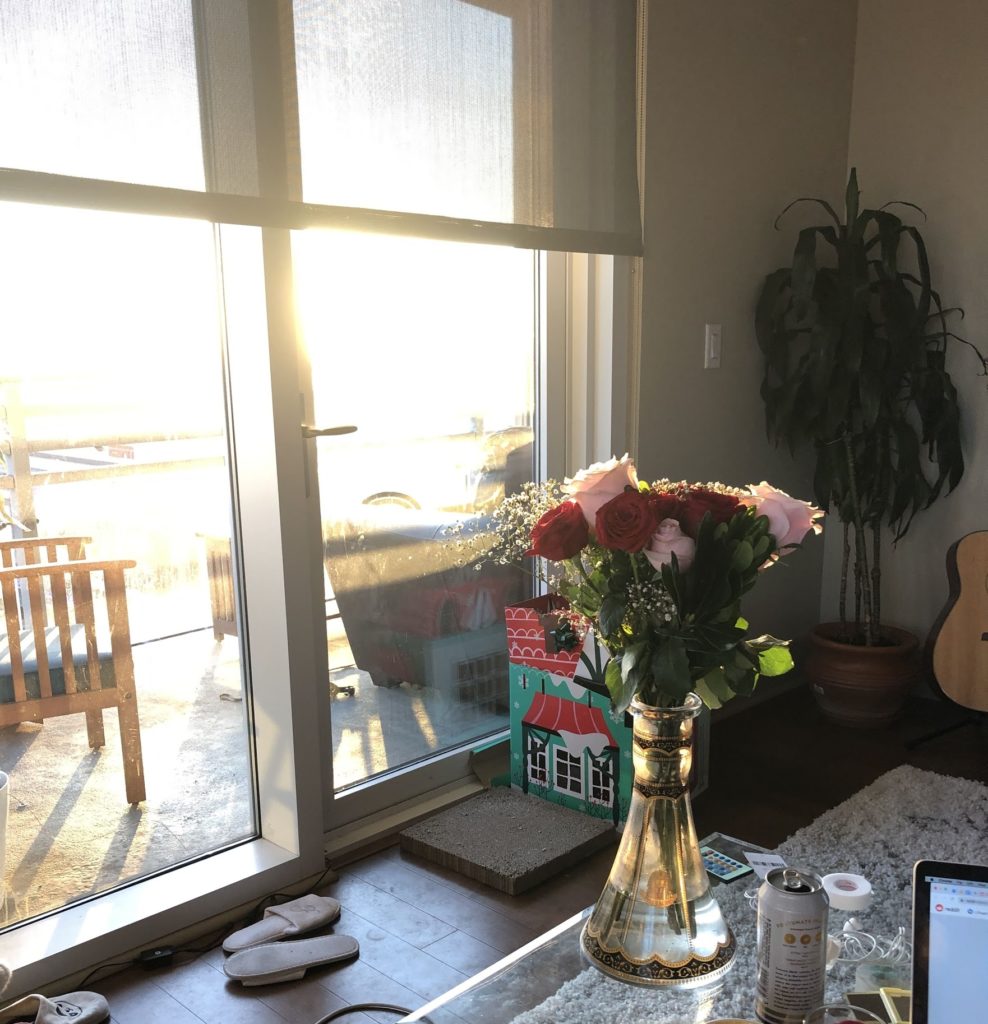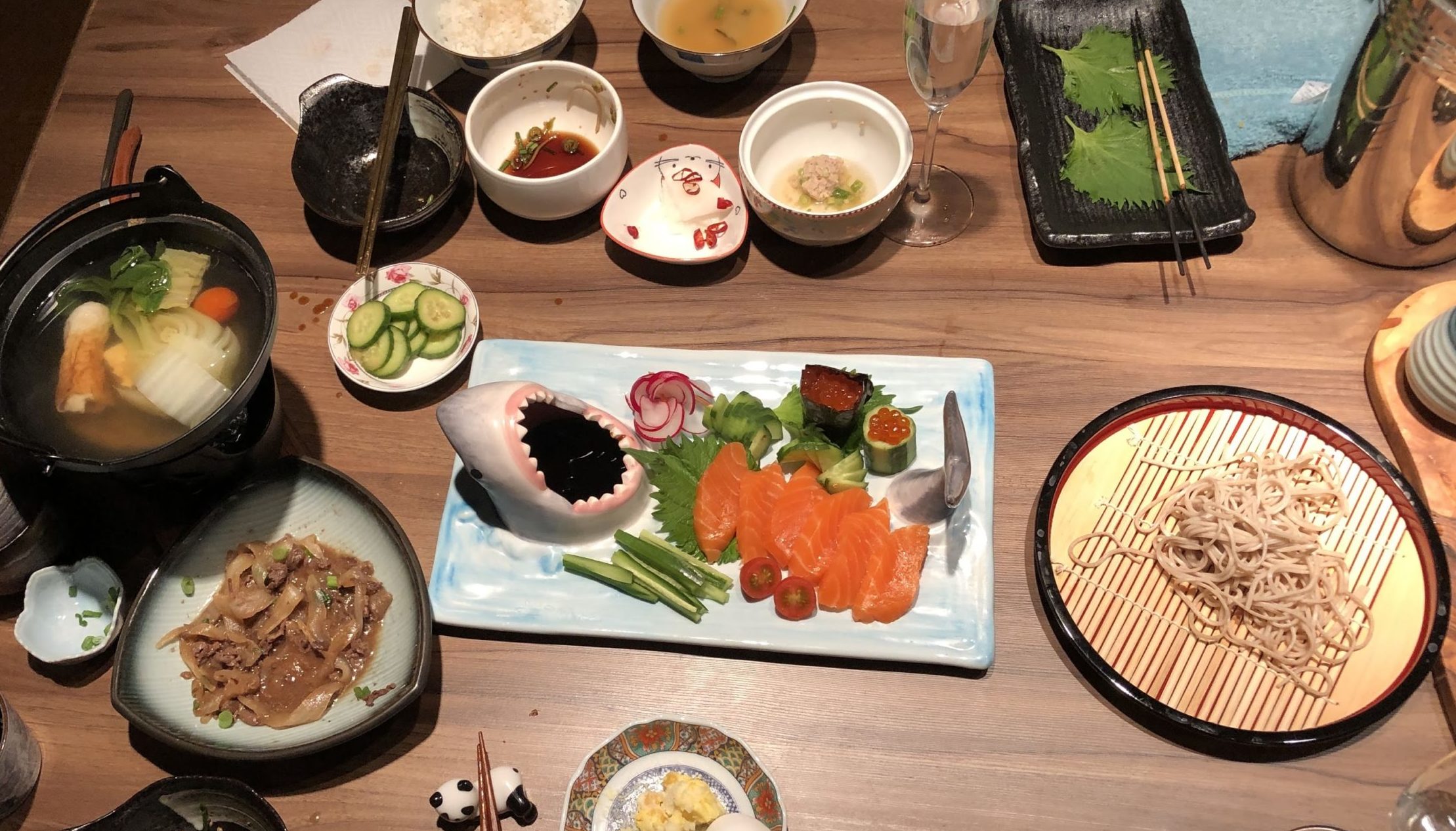It’s been hard to write about or even care about travel during this coronavirus pandemic. I’ve been seeing people go back to basics: cooking their own food, baking bread, and even growing their own produce. I live in a highrise, so I’ve been growing a few herbs and leafy greens on my balcony in containers. I’ve also started cooking more, since I’m not eating at the workplace cafeteria more, and this has resulted in a bunch of fun dishes and tasty experiments.
This year for Valentine’s day, I was feeling particularly inspired, and I decided to cook a kaiseki-style meal for dinner! Kaiseki is a traditional Japanese multi-course dinner, and I wanted to re-create what we had eaten in Japan, in our own home. In ancient times, kaiseki was served to nobility. It makes sense — even today, kaiseki is considered a gourmet, extravagant meal.
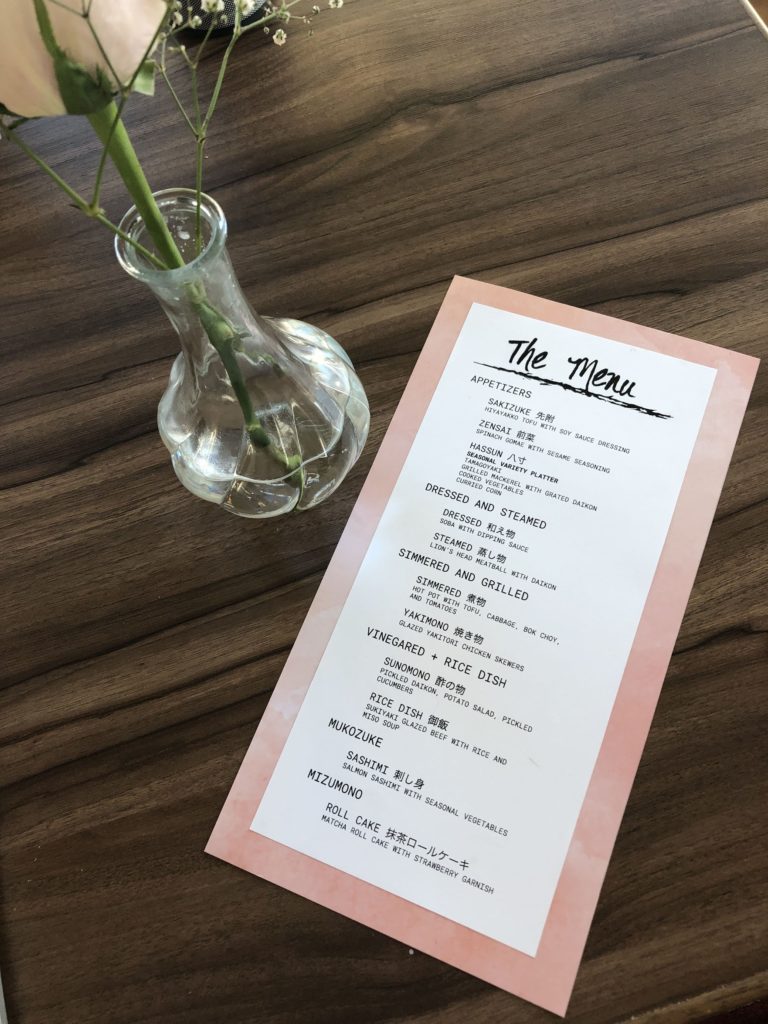
Each course is small, but not bite-sized. Traditionally, you start with appetizers, then you move onto pickled vegetables and sashimi. Then, you are served a hassun, or seasonal platter of small delicacies. The next few courses go together in a series: each is made with one of the main different Japanese styles of cooking. You’ve got grilled, steamed, dressed, simmered, and vinegared. Finally, you have a rice dish, and then dessert. The order and inclusion of these courses can vary, depending on the chef and the occasion. But for the most part, it’s at least 9 or 10 courses, cooked in many different ways. And every kaiseki is ALWAYS plated beautifully.
I decided to stay mostly true to what we had eaten in Japan, but I knew I’d have to take a few shortcuts in order to cook dinner and keep it a surprise from Masa until the last second. In the weeks before this, I zipped around the Los Angeles area, visiting Japanese markets and specialty stores to find the perfect ingredients and garnish, as well as the most traditional plates and bowls I could find.
To start off, I prepared 3 courses of appetizers.
Up first: hiyayakko tofu
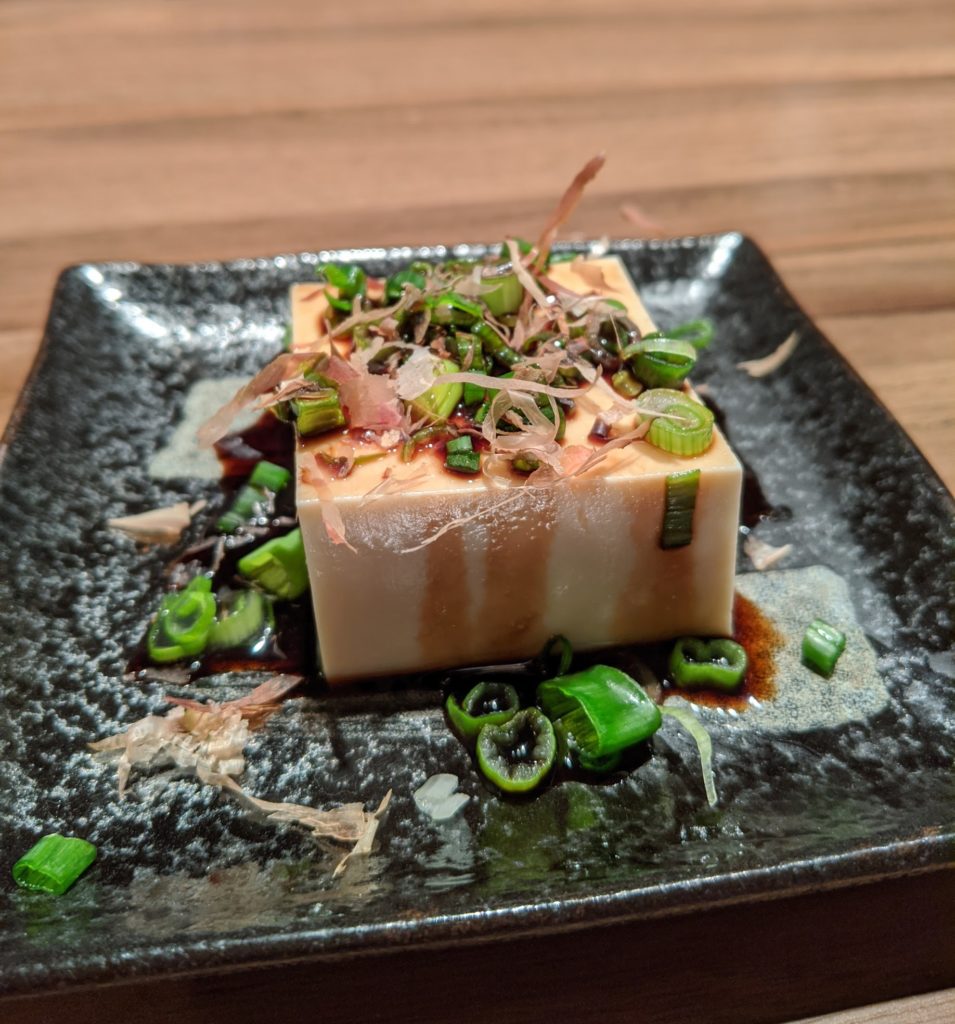
This was a cold dish of silken soft tofu, topped with soy sauce and garnished with green onion and bonito flakes. I found THE PERFECT mini square plate at DAISO for little more than a dollar.
Next: spinach gomae, my second appetizer.
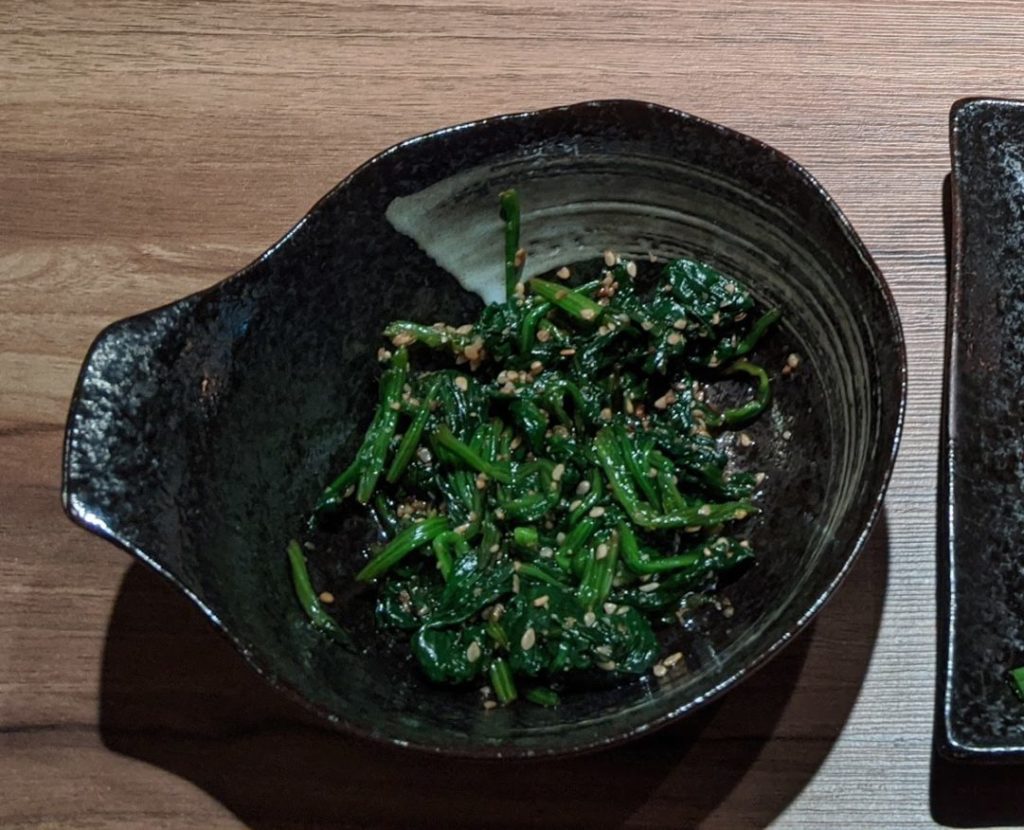
This is a cold dish made of blanched spinach, dressed with sweet soy sauce and sesame sauce. I served it in another bowl I found at DAISO.
The third appetizer: a hassun platter of seasonal bites.
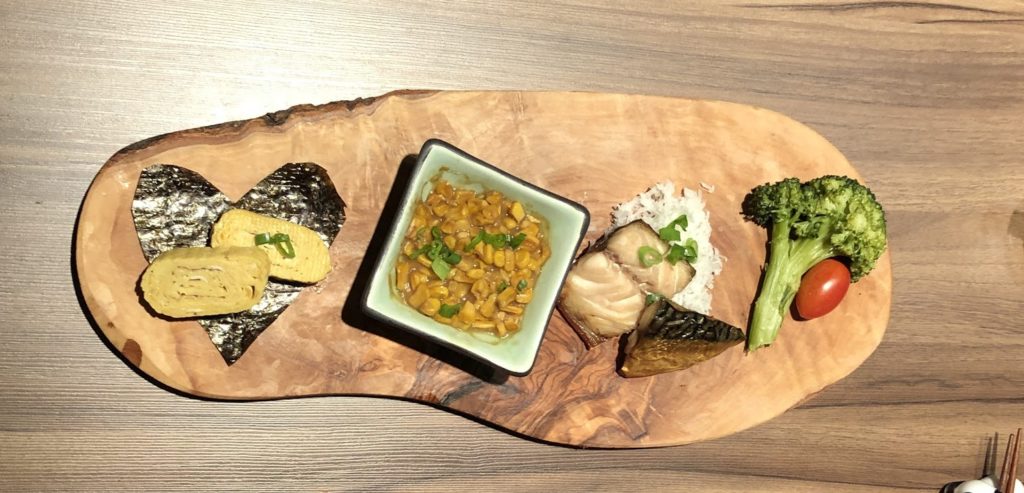
From left to right, the small bite-sized samples are tamagoyaki (fried egg omelette), curried corn, grilled mackerel on a bed of grated daikon, and blanched broccoli + raw grape tomato. I served it on an olivewood platter I got at Sur La Table, because I wasn’t able to find a nice interesting platter I liked at any of the stores I went to.
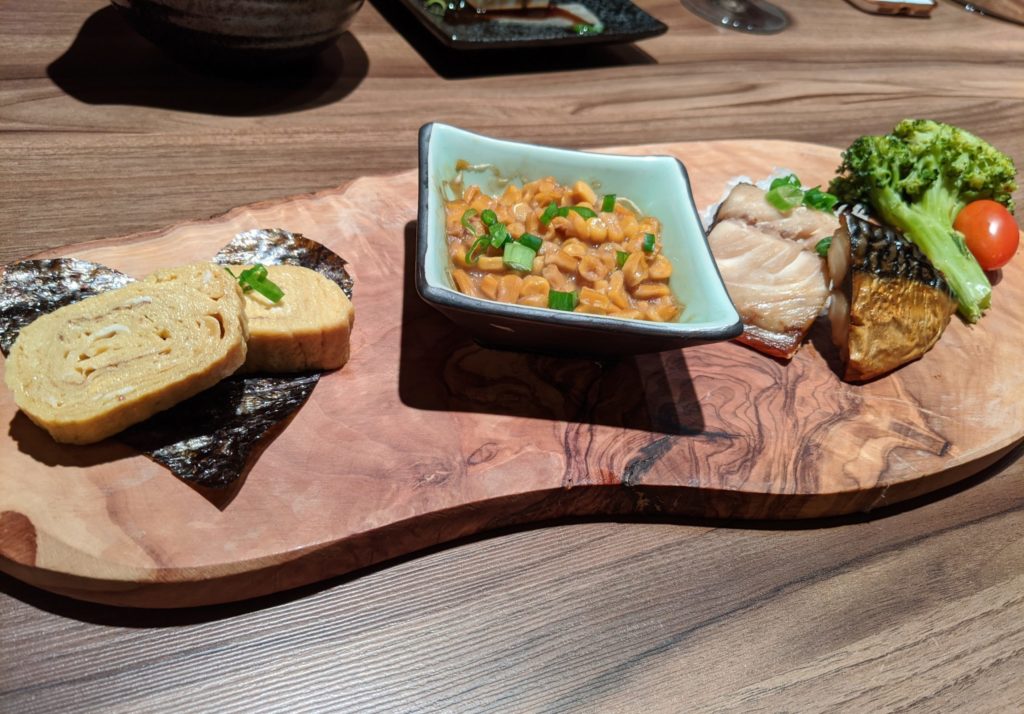
I put the tamagoyaki on a heart-shaped cutout of seaweed! This was a lot of fun to make. When he ate it, Masa said he ate tamagoyaki all the time when he was a kid. And the curried corn dish is special to us because it was the best side dish at one of our favorite restaurants, Tokyo Fried Chicken (check it out sometime!).
The next course was the dressed course: cold soba with dipping sauce
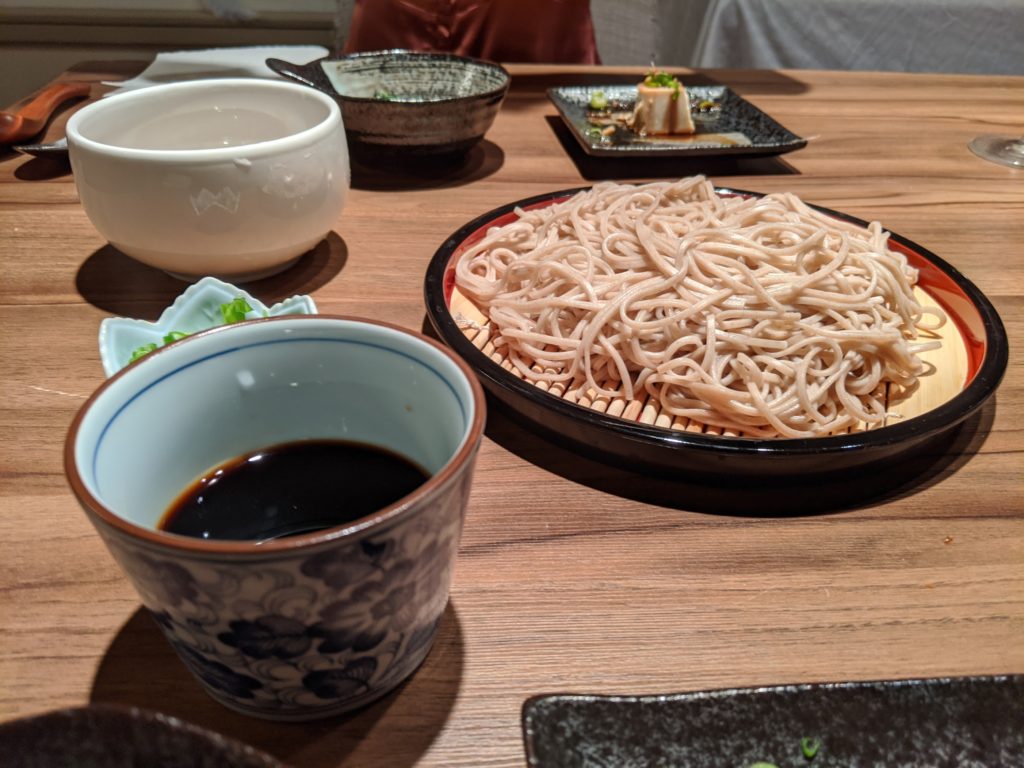
This was one of the simplest dishes to make, since all you have to do is boil the thin noodles and serve them with a sauce that’s readily available in all Japanese grocery stores. It also comes with a small dish of green onions for a small kick. I bought the flower-shaped sauce dish and the black and red lacquer serving platter (specifically made for cold soba!) in two different Japanese dish stores in Little Tokyo. The sauce cup in the foreground I actually had to find on amazon.jp, since I couldn’t find it in stores. And I didn’t want to just use a regular teacup.
I served the soba alongside the steamed dish: lion’s head meatball.
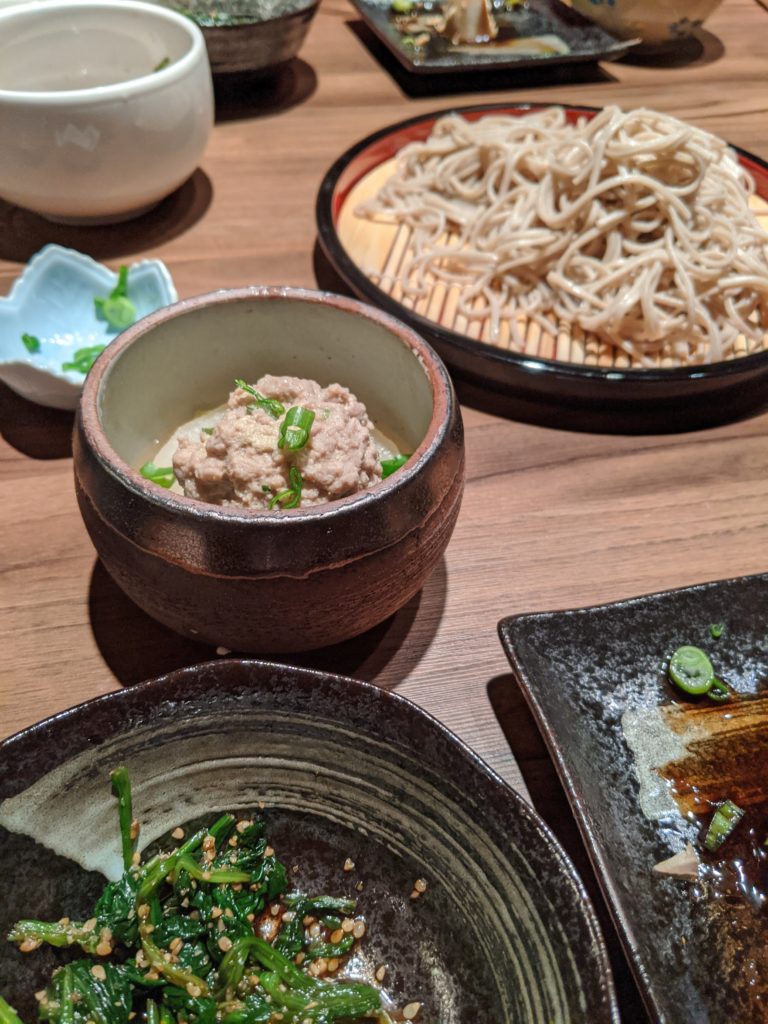
This is actually a Chinese dish, but I thought its flavors would be great with the plain soba. It’s a pork meatball on top of a daikon slice. As it is steamed, the pork juices get soaked up by the daikon, resulting in a deliciously soft and juicy combination. I got the spherical lidded bowl also from amazon.jp. I could have used a sugar bowl for this, but that would have felt weird, so I opted for a bowl made specifically for this. Shipping from Japan was so expensive!
The next dish was the simmered dish: azabu nabe.
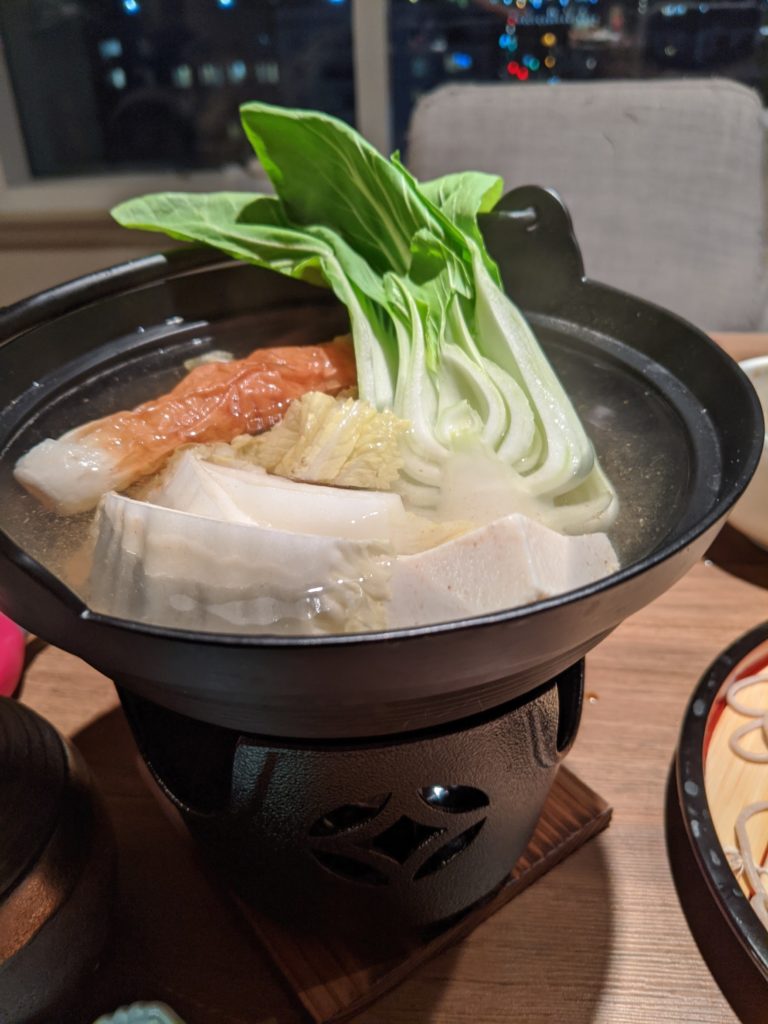
This was a tabletop hotpot dish. It’s usually a clear, simple broth with fresh vegetables and tofu. The chef or waiter (me) usually brings it to the table, lights it up, caps it with a fragrant wooden lid, and it’s brought to a boil within a few minutes. The small, individual-sized pot stands on a small black stand, and there’s a little cup of gel alcohol cooking fuel inside that heads it. We got our tabletop setup in Tokyo on Kappabashi Dori, the kitchen supply shopping street!
The next dish was the grilled dish: yakitori-style chicken skewers
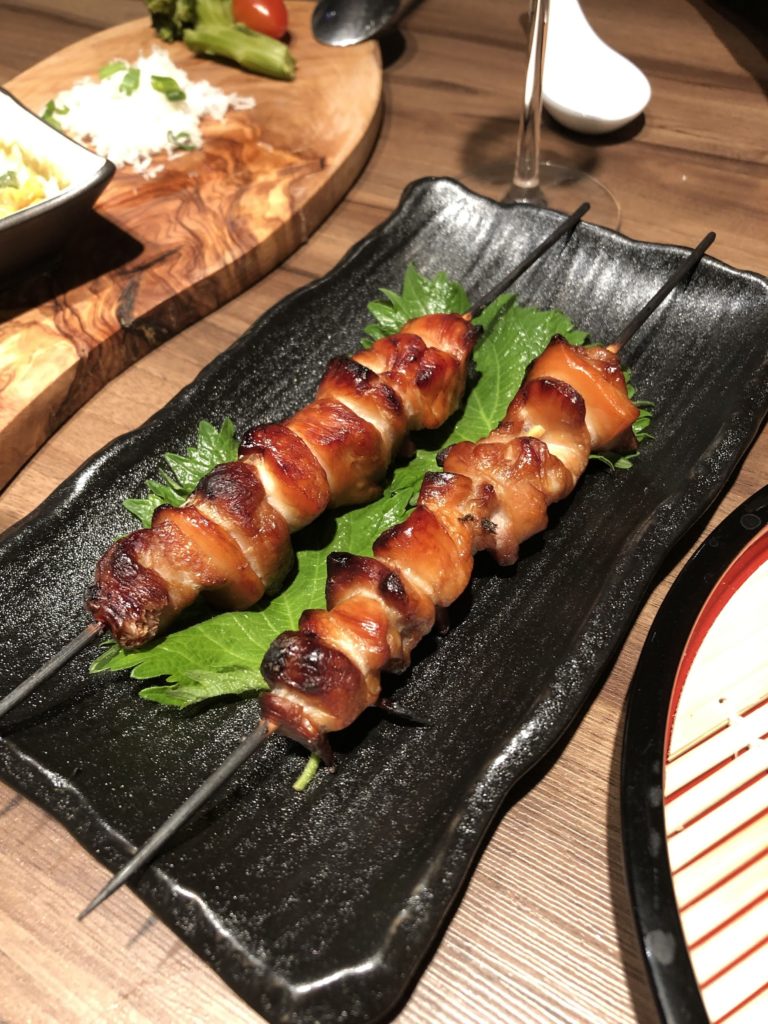
These are chicken glazed with a pseudo-teriyaki sauce, skewered and baked in the oven, and served on top of fresh shiso leaves. I got the plate at a Korean restaurant supply store, and I cut the skewers to fit the plate just right. In hindsight, I should have done a coat of glaze after baking for extra flavor.
Next up was the rice dish: a sukiyaki beef bowl served with rice and miso soup.
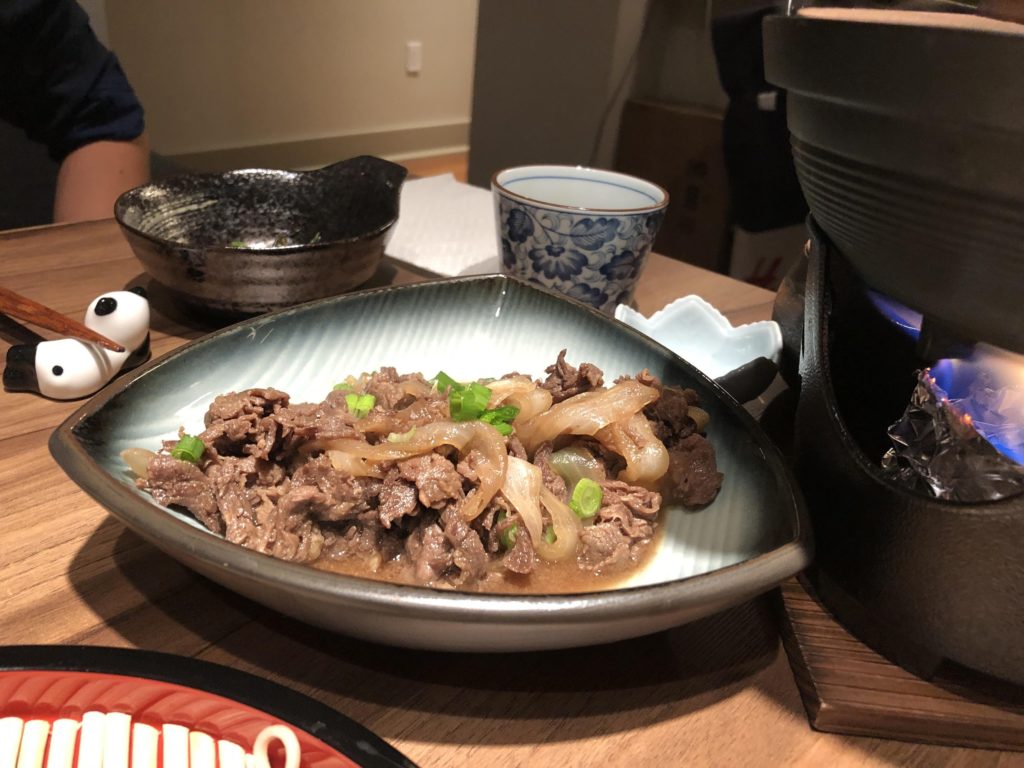
I cooked the thin beef slices and onions in soy sauce a ton of sugar to recreate one of Masa’s favorite flavors: sukiyaki! This was quite easy to make. I served it alongside a bowl of rice and a bowl of miso soup. I chose a triangular dish since I felt that a simple, 5-minute dish like beef gyudon needed a fun plate.
With the gyudon, I prepared the vinegared dishes: pickled veggies.
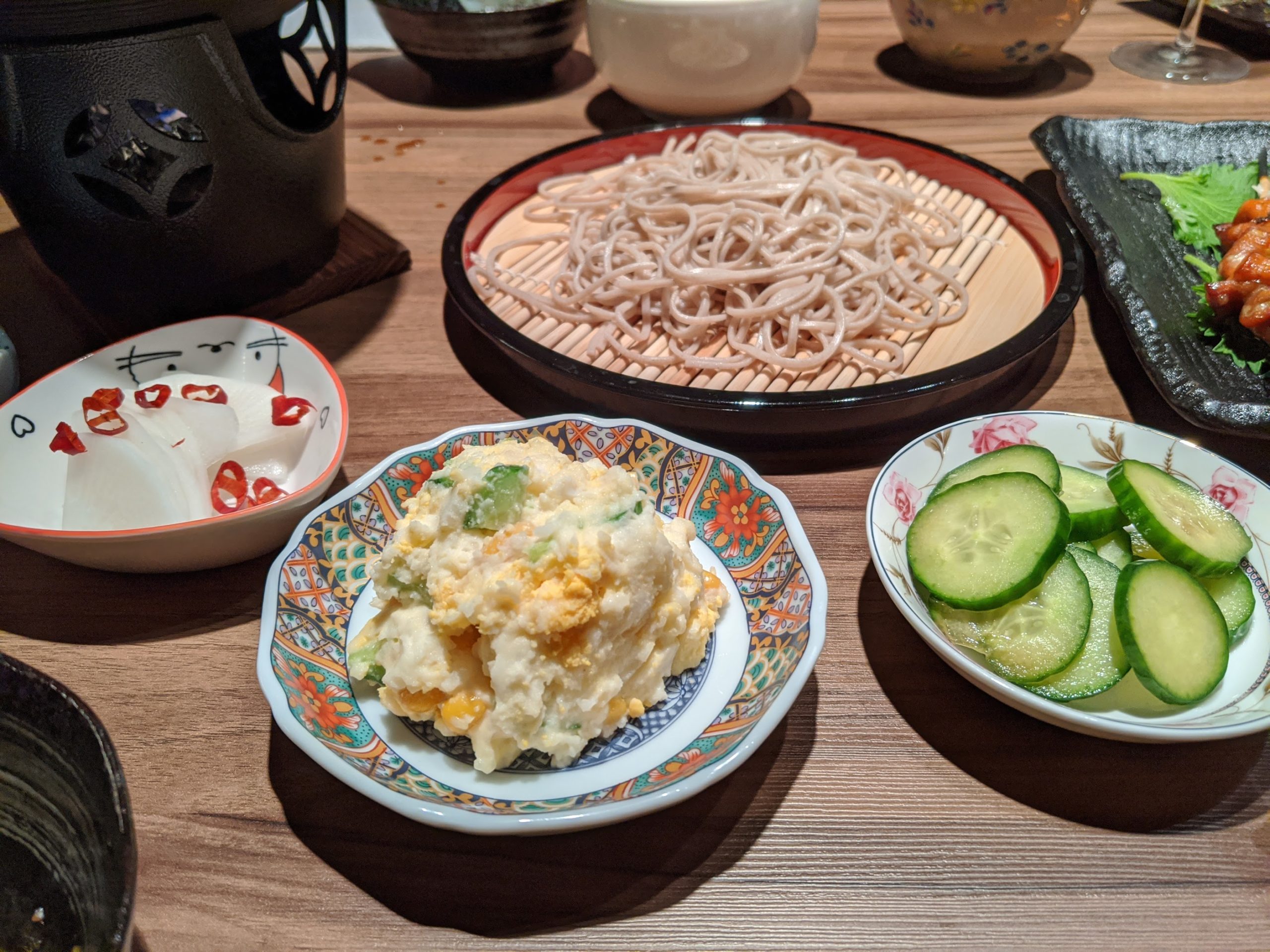
From left to right, I made pickled daikon with chili garnish, potato salad, and pickled cucumbers. The potato salad is always the first side dish Masa devours when we go out to eat at restaurants! I got these small sauce dishes from a variety of Japanese and Chinese markets.
Lastly, the grand finale of the meal: sashimi.
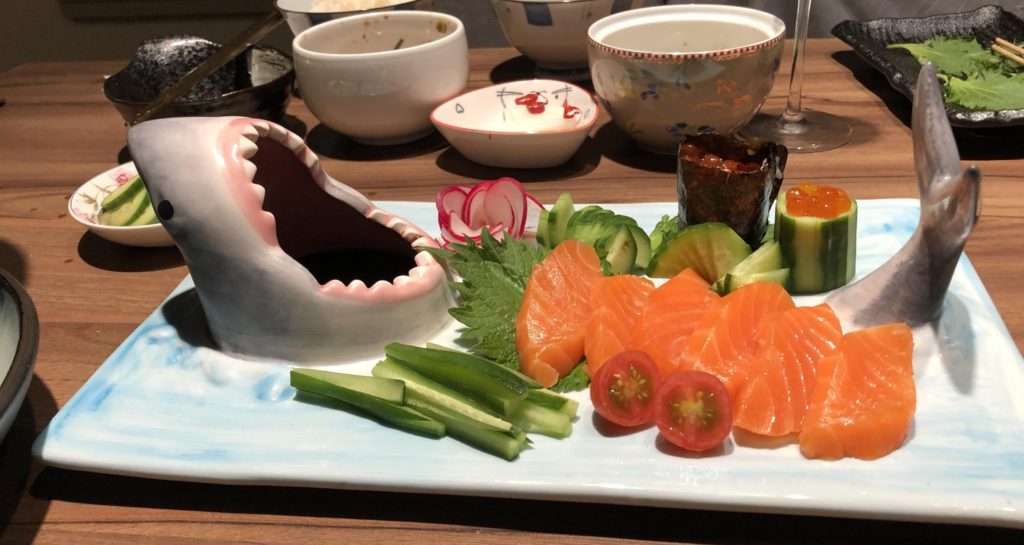
I bought some salmon sashimi and salmon roe from the supermarket, and plated it with carved and sliced cucumber, radish, and shiso leaves to create a nice backdrop for the fish. I got the shark plate on Amazon, and the shark’s mouth actually doubles as a soy sauce dish! This was really fun to make and eat.
About an hour after, we had enough room to eat dessert: matcha roll cake.
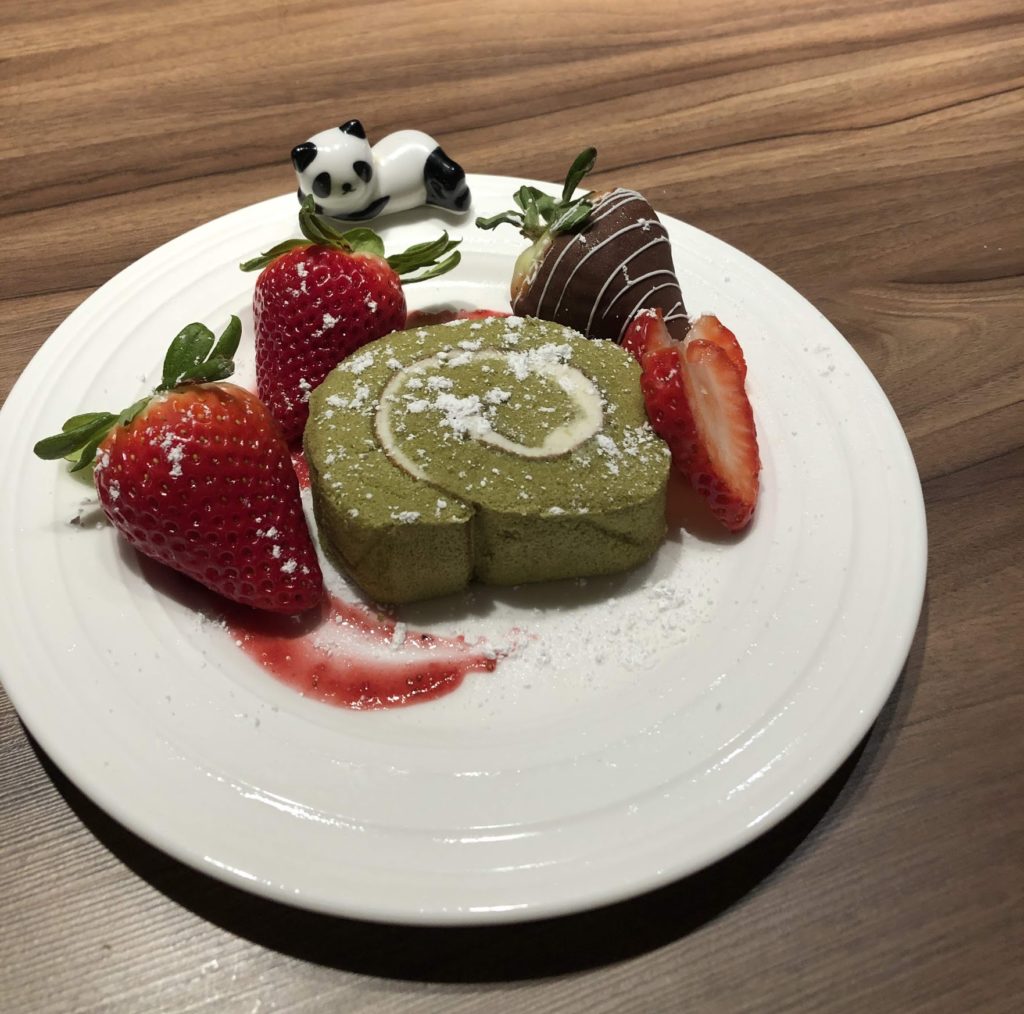
I didn’t have time to make a dessert, so I bought this pre-made matcha roll cake and plated it nicely with chocolate strawberries from a nearby bakery, strawberry puree underneath the cake, regular strawberries, and powdered sugar. On the top edge of the plate I put a suggestive panda chopstick holder for fun.
We had a blast!
In the weeks leading up to this, I made a meticulous spreadsheet detailing what tasks I’d be doing at each step of the way, so that I could be working on multiple dishes in parallel. I even bought a party tray warmer so that the dishes could stay warm before it was time to eat them. Besides the mess I made, it went exactly according to plan.
It only took me 5 hours to cook all this!
